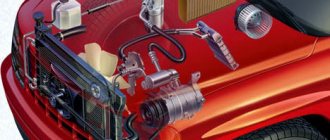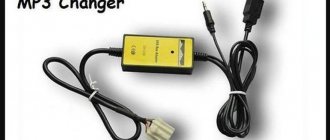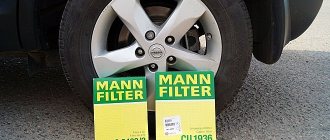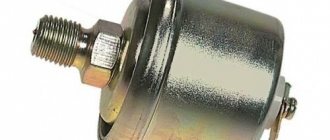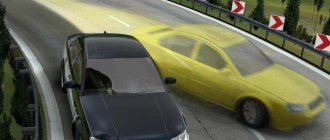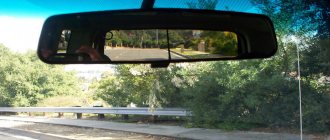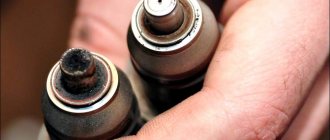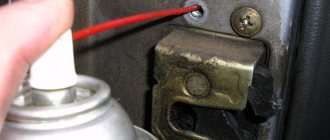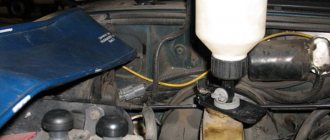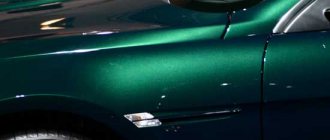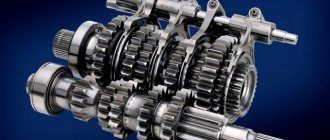Liquid car sound insulation is a fairly new direction in the field of car soundproofing. Despite the fact that this type of sound insulation has not yet become widespread, it has already won many fans. As part of the article, we will provide you with all the information on this innovative technology so that you can independently perform this procedure at home and improve the quality characteristics of your car. In addition, you will find out what are the advantages of liquid “shumka” over sound insulation with sheet materials and by what means it is carried out.
Liquid car sound insulation and its advantages and reviews
Information is provided for the external treatment of wheel arches and the underbody of a vehicle with liquid soundproofing compounds. The interior finishing of the wheel arches and the interior floor is made using the technology of gluing sheet noise-insulating material.
Liquid SHVI is used to process the outer wheel arches and the underbody of the car. Conventional sheet sound insulation is not at all suitable for finishing these parts of the car, since it cannot cope with the external aggressive environment. The fact is that most vibration and sound insulating materials absorb moisture, are exposed to chemical reagents, temperature changes and other harmful factors, so over time they begin to peel off and no longer resist corrosion and extraneous sound. The use of mastic materials makes it possible to more reliably protect the outer surface of the body. Materials of this profile meet a number of necessary requirements. They maintain operating temperature conditions, are resistant to the influence of salt reagents, and are resistant to mechanical stress from flying gravel and small stones. The main component of the mastic material is liquid rubber, which, after drying, effectively protects the treated surface from various harmful influences, is an anti-corrosion agent and has an additional noise-insulating effect. Therefore, you should not be surprised if, after treating the bottom of your car and wheel arches with rubber-bitumen mastic, you find a quiet background sound when driving.
Currently, there are two technologies for applying liquid sound insulation:
- According to the first type, liquid “shumka” is applied to the surface along with a primer layer, which gives the effect of adhesion;
- According to the second type, the mastic is applied to a clean, grease-free surface.
Experts in the field of sound insulation recommend using this material in conjunction with ordinary porous noise. The liquid consistency of the material fills joints well and provides excellent protection from external noise.
The overall noise level in the car interior will be significantly reduced, since the liquid “Shumka” helps eliminate street sound that penetrates through the wheel arches of the car. It will also remove rattling of interior panels and improve the sound of car acoustics.
Main types of liquid soundproofing materials
At the moment, the range of liquid formulations is quite narrow and does not provide much choice. Basically, these are rubber-bitumen mastics, which have anti-corrosion properties and a noise-insulating effect, or rather a vibration-isolating effect, since they work on the same principle as sheet vibration dampers. They absorb vibrations and convert them into thermal energy. The difference between sheet materials is that in their manufacture, manufacturers use various fillers that make vibration absorption more effective. Let's look at the most common types of mastic mixtures that car owners use for exterior body treatment while enhancing the overall soundproofing effect.
Nuxodol 3100
Noise-absorbing paste for aerosol application (manufacturer AUSON AB, Sweden)
Elastic noise-absorbing paste on a polymer base. Prevents resonance, converts vibrations of sound frequencies into heat. It has waterproof and anti-abrasive properties. Apply by spray, brush or roller to a previously degreased and clean surface. Suitable for metal and plastic surfaces with a thickness of 0.5-5.0 mm. To achieve good results, apply a layer of 1.0-2.5 mm. Dries within 6-12 hours. Complete polymerization occurs within one to two weeks. In the final state it is a solid polymer film. The top can be painted with any type of paint. Material consumption – 1.5-4 kg/sq.m.
Dinitrol 479 (Dinitrol 479)
Protective compound based on synthetic rubber (EFTEC Aftermarket, Sweden)
Better known as “liquid fender liners” or anticorrosive. It has noise insulating properties and corrosion inhibitors. Combines three functions - anti-corrosion for the bottom, anti-gravel coating and sound insulation. Apply by brush, spray or spatula. Recommended film thickness is 1000-1500 microns. Polymerization time is 6-12 hours.
STP Mastic NoiseLIQUIDator
Two-component vibration-absorbing mastic Noise LIQUIDator/B (Standartplast Group of Companies, Russia)
Combines anti-corrosion and vibration-damping properties. Recommended for use on hard parts with a textured surface. Use on flat surfaces of large area and low rigidity (doors, roof, wings) is not advisable. It consists of two components: base A and hardener B. The mixed composition can be used for 40-50. Apply a uniform layer of 2-3mm using a spatula. It is recommended to use 1 kg per arch. Dries in 24 hours.
Vibration absorption coefficient (VAC) – 0.19 units.
Specific gravity – 4.09 kg/sq.m.
Noise reduction level on the treated surface – up to 40% (3dB)
Rubber bitumen mastics
These include a variety of mastics sold on the market. They are a mixture consisting of bitumen solution and rubber (rubber) with fillers of alkyd resin and plasticizers. The most common are MPB-97, Cordon, BPM-1, Kord, etc. Unfortunately, such mastics are not high quality and they do not meet a number of requirements. The main condition when choosing is the solid final state of the mastic when it dries. Mastics that remain in a semi-liquid state for a long time, primarily anti-corrosive ones. Their main advantage is the price.
The process of applying liquid sound insulation
Recently, in the automotive industry there has been a tendency to reduce the cost of the manufactured product in order to maintain its competitiveness in market conditions. Naturally, by lowering the price, the manufacturer makes up for monetary losses by saving on the finishing of the car. Therefore, as a rule, standard sound insulation is not able to protect the car from noise coming from various sources. This applies to both foreign economy class cars and our domestic ones. Moreover, even more so for the latter.
Most likely, you are also thinking about the need to soundproof your car, because you are tired of constant cracks, rattles, squeaks and knocks. We won’t bore you for long; we’ll tell you about the process of applying liquid sound insulation.
Liquid mastics for sound insulation are mainly applied to the underbody and outer wheel arches of the car. Before application, the entire surface to be treated is thoroughly cleaned of dirt and dust, and then degreased. Experts also advise rubbing the desired areas with fine-grained sandpaper and only then applying a special degreasing solution, for example, silicone remover or White Spirit. After the procedure, the primer composition will more easily adhere to the surface being treated.
At the second stage, as you may have guessed, you should prime the cleaned and degreased areas with a special soundproofing mixture. Then you need to wait for the primer layer to dry.
Next, we proceed to applying liquid noise-insulating rubber-bitumen mastic. When applying, the low polymerization rate should be taken into account. As a rule, it is indicated on the packaging and is different for each product.
The liquid soundproofing mixture can be applied with a brush or spray. If you use a sprayer, then before starting application, be sure to cover the surface on which liquid mastic is highly undesirable. Experts recommend using professional paper and adhesive tape, which are usually used when painting, but you can cover the surface with ordinary newspaper.
Liquid mastic is applied in two layers. After the first application, you should wait until the rubber-bitumen layer has completely polymerized, and then just start applying the second layer, which also needs to be thoroughly dried.
How to apply sound insulation
We buy or rent for money or for free from friends a special pneumatic gun, with which we will spray the liquid solution. For the gun to work, a compressor is required. The nozzle of the gun should not be too fine so that the viscous liquid spreads evenly and does not get stuck on the tip of the nozzle.
Take a can of liquid rubber and insert it into the sprayer. The gun is connected to the compressor with a hose.
Spray process:
- It should be applied in several layers. One layer should be about 1.5 millimeters thick.
- After the first layer you need to wait until it dries. And so, before each previous layer, we wait until it dries. To avoid confusion in layers, you can use different colors.
- After all layers have been applied, wait for it to dry completely without disturbing the car.
In combination with the usual “Shumka”
Liquid “Shumka” gives excellent results if used in combination with conventional sheet sound insulation. Thus, the amount of road noise is reduced by an order of magnitude, due to the improvement in the quality of protection for the car interior. Applying noise-insulating liquid to joints is actually no different, with the only difference being that usually hard-to-reach areas cannot be pre-treated with a primer mixture, since the design of the car does not allow this. In these cases, the surface is only degreased using a spray bottle.
The solvent should now be given time to evaporate. Keep in mind that in a closed space the evaporation process is much slower than in an open area. This usually takes from one to three hours. Under low temperature conditions, the polymerization time doubles.
It is important to note the fact that liquid “noise” only from the outer wheel arches and the bottom of the car will not completely eliminate noise in the cabin. In order to maximize noise insulation of their car, many car owners carry out a comprehensive inspection of other parts of the car using sheet materials.
Useful tips
If you are soundproofing your car yourself, then you should listen to the following expert advice that will save you from inconvenience:
- When disassembling the interior of a car, use electrical tape to secure the bolts and clamps on the parts that you are removing. This will allow you to avoid getting confused and losing anything during assembly.
- Apply soundproofing materials as carefully as possible; there should be no voids or gaps between them. If the sound insulation is applied unevenly, you will not achieve any results.
- When disassembling and assembling the interior, use the help of a friend. It will be especially necessary when removing wheels and seats.
The video shows how to make liquid sound insulation for wheel arches:
If it seems to you that all the steps described above will take too much time, are quite troublesome and you do not have the patience to complete all the steps, then it is better for you to turn to specialists. At the service station they will always come to your aid. In this case, it is worth remembering that labor-intensive work always requires large financial costs, so be prepared to shell out a considerable amount from your wallet.
In conclusion, we can summarize that do-it-yourself liquid soundproofing of a car is quite simple, and while the degreasing solvent and layers of soundproofing composition are drying, you can do any other work. The use of liquid sound insulation is also supported by its many advantages, such as reliable protection against solid bodies, excellent sound insulation properties, corrosion protection and the ability to use hard-to-reach surfaces for insulation.
Remember, the absence of noise in the cabin means your comfort and the comfort of your loved ones during trips.
